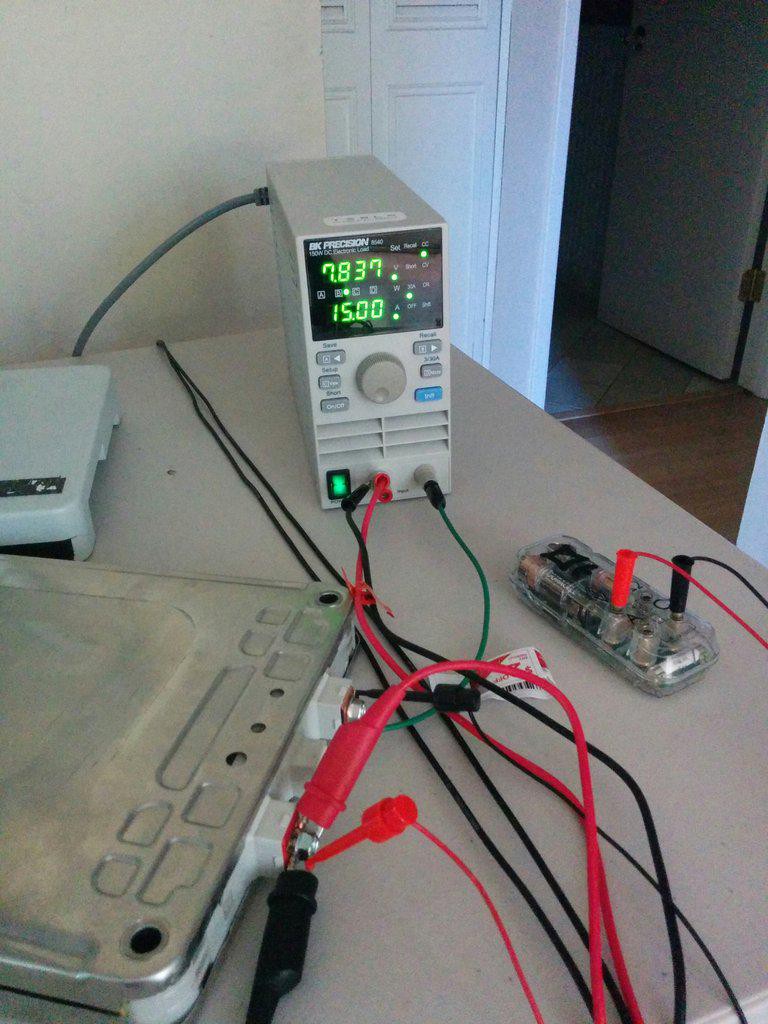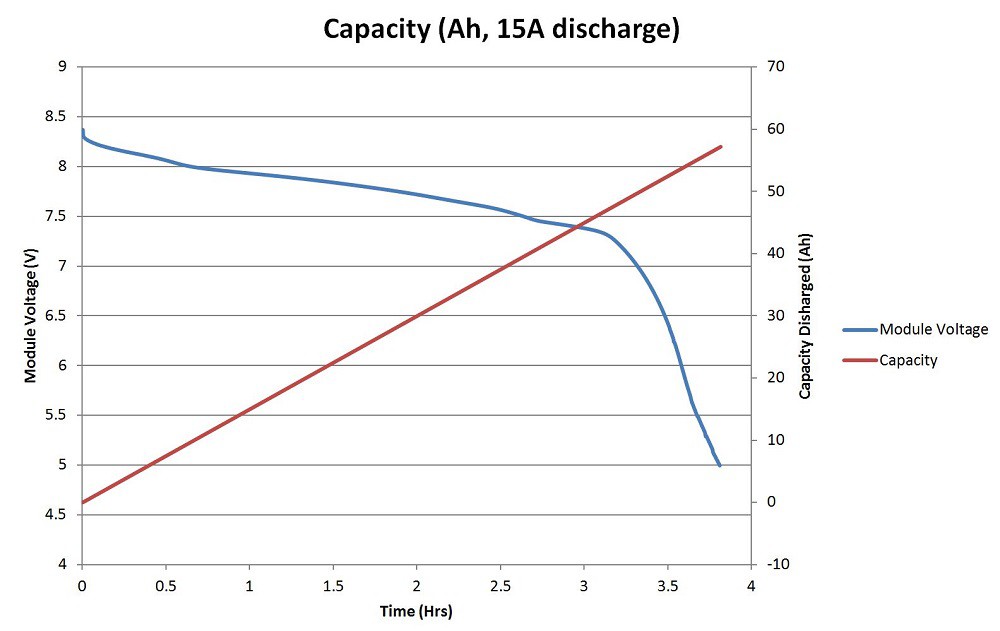I am selling the extra Nissan Leaf battery pack I have since I need to fund this project as things start really moving ahead.
A used battery is worthless unless people have some sort of assurance of its health and capacity. This one has a bit over 24,000 miles on it, so a capacity test was in order.
My test setup is shown below. It's a 150W electronic load and the Mooshimeter I won during the earlier stages of the HaD Prize. I played with the dual-channel capability of this cool little device while I was charging the cell module in preparation for the capacity test. I found that at the currents I was charging at (6A) I had enough drop across the wiring and internal shunt that I really needed some kelvin sense lead to get an accurate voltage. The shared common (-) terminal was a bit of a handicap here, but it was fun to play with and it did work. I was able to calculate the resistance of the leads using a second meter and correct for it in the logged data based on the measured current (which I know is accurate due to Mr Kirchoff).
Since the discharge test was performed at constant current, I didn't use the dual channel capability of the Mooshimeter for the actual capacity check.

The capacity of the cell is measure in Amp Hours (Ah) and is simply the integral of the current over time, with the voltage kept within the operating window of the cell.
The module has two cells in series, so my operating window was 8.4v to 5v (4.2v to 2.5v per cell). The test took 3.82 hours to bring the module from 8.37v to 5v, so the capacity is 57.3Ah.
Still a very beefy and capable cell!
Now I need to charge the module back up to where it started so I can put it back in the series string without worrying about it being out of balance with the rest of the pack.
 mauswerkz
mauswerkz
Discussions
Become a Hackaday.io Member
Create an account to leave a comment. Already have an account? Log In.